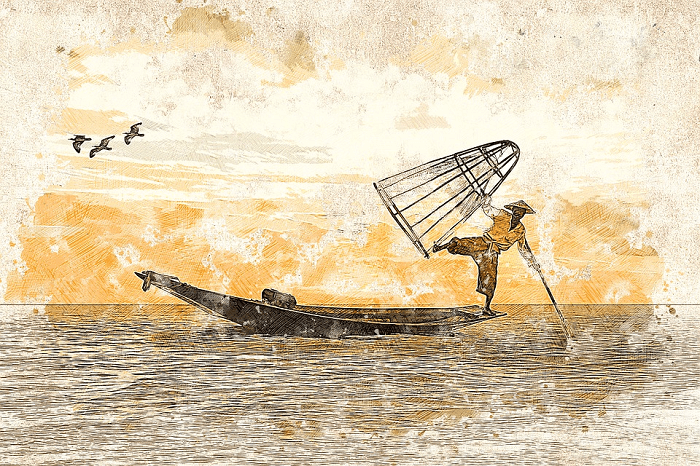Coromandel Fishers Summary By Sarojini NaiduIntroductionSarojini Naidu wrote the poem 'Coromandel Fishers', which is about the fishermen of the Coromandel Coast. In this poem, the poet portrays a fisherman's difficult and dangerous life. They prepare to work in the water to catch fish around sunrise as part of their daily ritual. They are unafraid of the ferocious ocean waves and oncoming storms. They bravely fight the rising waves, always roaring to devour them. Though the sea waves are their friends, they cause terrible mischief, and the fisherman becomes the victim of this wickedness. Consequently, the threat to their lives is ever-present. Their desire and daring drive them to paddle to the horizon's furthest point. Three stanzas with four lines each make up this poem. The poem has the rhyme pattern AABB. 
The Poet's BioSarojini(1879-1949) was the oldest child of her family, who began learning English at a young age. She was born in Hyderabad on February 13, 1879, and passed the Madras University entrance exam at twelve. She was a renowned poet, patriot, politician, orator, and administrator. The title "Golden Threshold" was given to her poetry collection when it was released in 1905. She later released two other poetry collections-"The Bird of Time" and "The Broken Wings". "Feast of Youth" was released in 1918. "The Wizard Mask", "The Magic Tree," and "A Treasury of Poems" were released afterwards. Among the multitudes of people who admired her art were Mahashree Arvind, Rabindranath Tagore, and Jawaharlal Nehru. Each Stanza's Explanation1st StanzaThe fisherman gets up as soon as they hear Dawn's call. The sky longs for the light since it has been so black for such a long time. The sunrise illuminates the entire sky. The sky welcomes the early light. The wind blowing all night long stays quiet like a child in the motherly arms of daybreak. The fisherman engaged themselves in their routine. They launch their rafts and begin to collect their nets from the beach. The sons of the sea (the fisherman) get ready and capture the fish that jumps into the sea. 2nd StanzaWhen they hear Dawn's cry, the fishermen immediately go to sea to capture fish. They quickly leave in the direction that the bird directs them. They look at the ocean as their mother, the cloud as their sibling, and the waves as their fellow soldiers. They are constantly tossed about by rising and falling sea waves, yet they seem unafraid of them. They are unconcerned about their own life. They believe that the sea divine would protect them from the raging sea waves and conceal them in his breast so they have no threat of drowning, even as the sun sets. They think the divine sea is in charge of the storms that form in the sea. 3rd StanzaThe fisherman lives in a calm environment. Their homes are flanked by mango and coconut trees. They detect the plants' lovely scent. There will always be shade. The full moon's dazzling rays reflect off the sand particles at the seashore, creating a beautiful scene that is well worth witnessing. The sounds are coming from a considerable distance because of the large space, and they start to fade. The fisherman believes this setting. The water falls over the fisherman due to the huge sea waves. When these water droplets kiss their bodies, they experience intense bliss. They like the wild sea waves' dancing. They are certain they will row as far as the low sky meets the water at the horizon's farthest limit. ConclusionThe Coromandel Fishers conveys the fishermen's camaraderie, connection to the sea, and traditional sense of discipline and order. The poem is best summarised as the early morning song ingrained in the thoughts and emotions of the basic fishing population on India's eastern coast. |
 For Videos Join Our Youtube Channel: Join Now
For Videos Join Our Youtube Channel: Join Now
Feedback
- Send your Feedback to [email protected]
Help Others, Please Share









